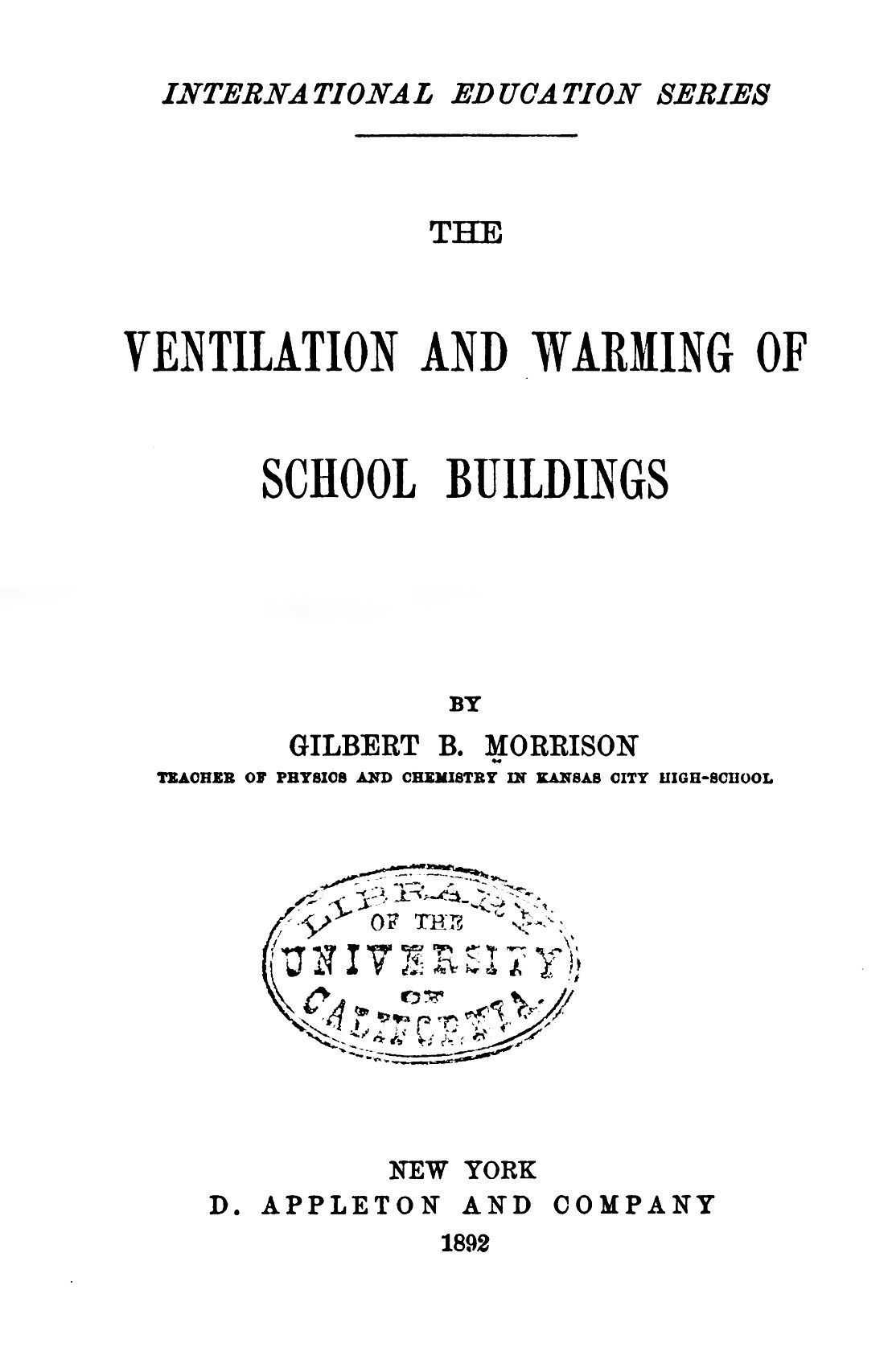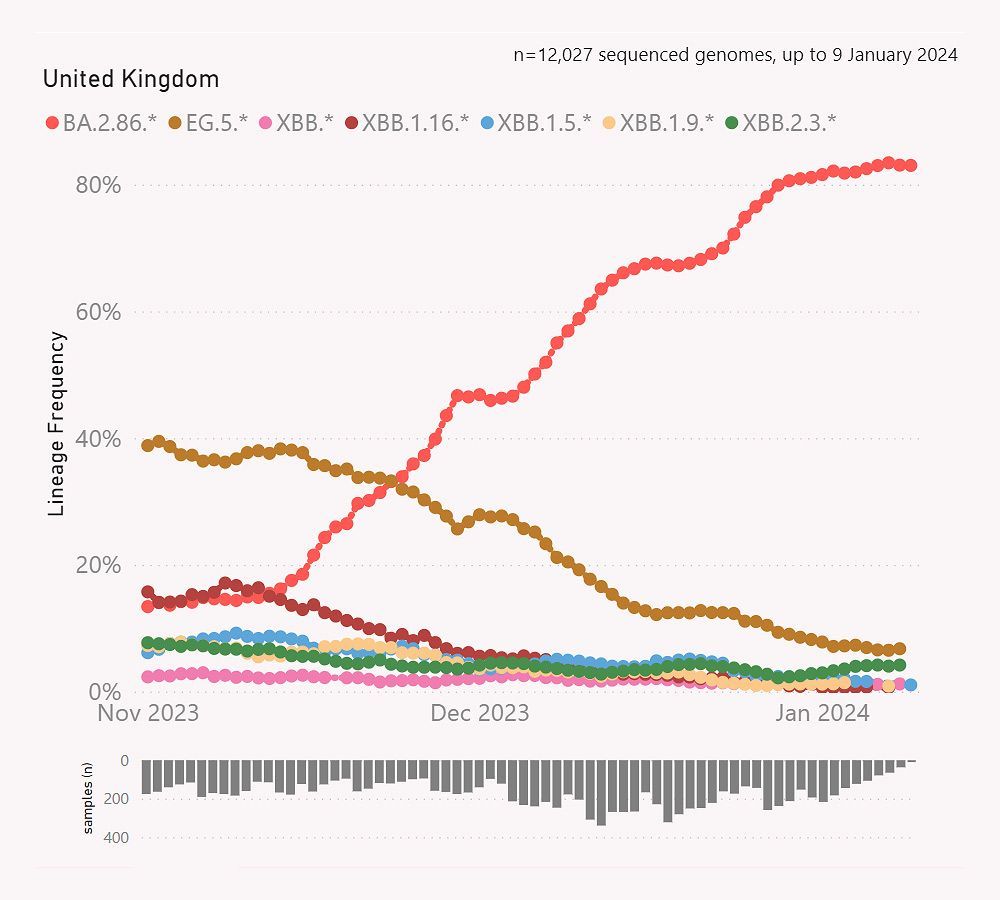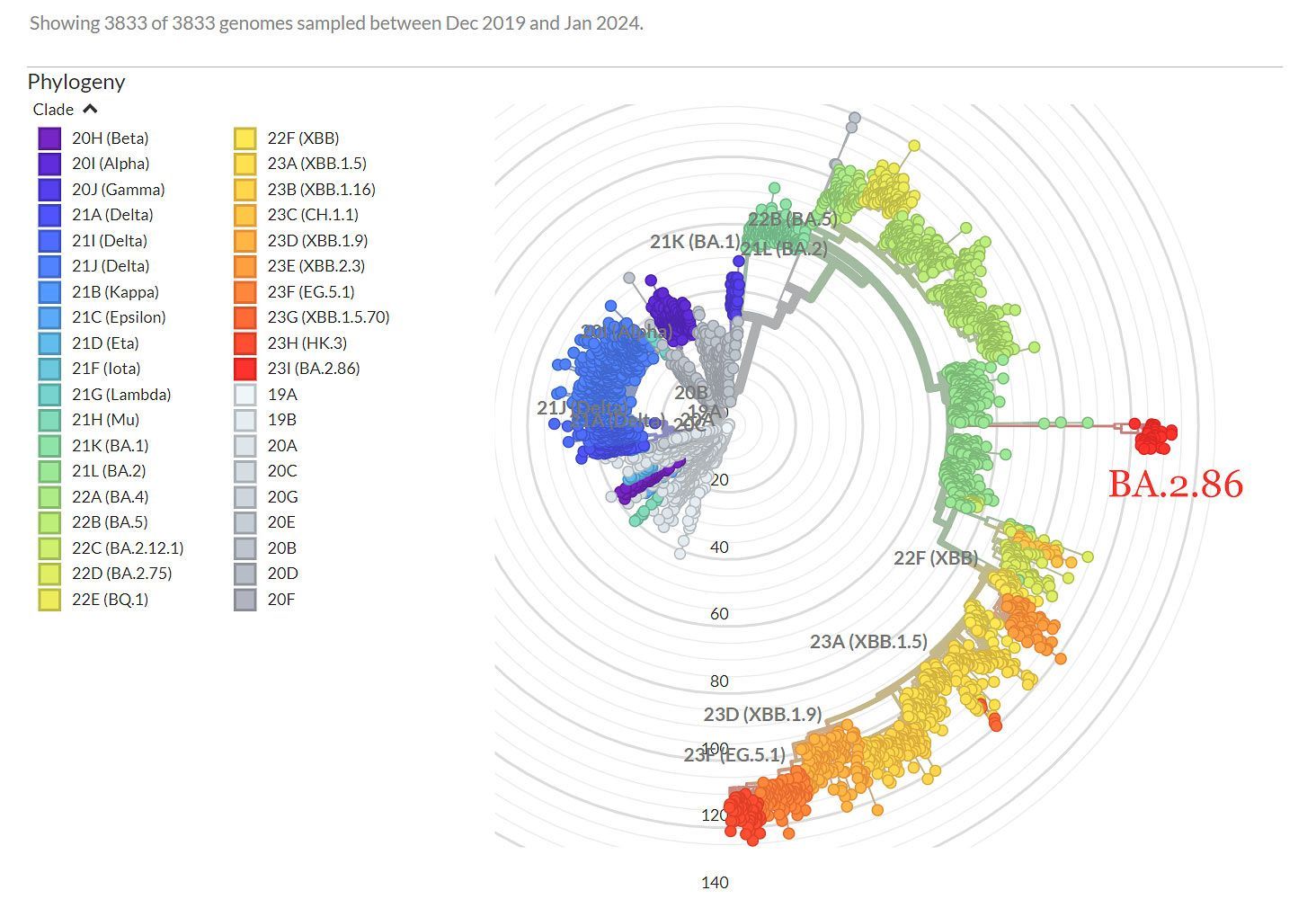on air: solutions
“There is no way out of this problem that does not involve suppressing transmission of C-19.”
Dr. Noor Bari, Emergency Medicine (2023)
❦ on basic degrees of humanity
‘First do no harm; then try to prevent it.’
Professor Geoffrey Hughes, DRCOG, FFAEM, FRCP, FACEM / Emergency Medicine Journal (2007) ➲
❦ a duty to care
“Healthcare workers must be provided with respiratory protection, and the air quality in hospitals be monitored and improved through the installation of ventilation systems and air filter units.”
Dr. K. Fearnley, NHS (England) (2023)
❦ on water, food and air
“We regulate water safety and food safety in an effort to decrease population rates of waterborne and foodborne illnesses.
Having clean air standards to lower the rates of respiratory illnesses isn’t radical.”
Dr. Lisa Iannattone (2023)
❦ on chronically under-ventilated schools
‘Buildings play a critical role in minimizing, or conversely exacerbating, the spread of airborne infectious diseases.
Building-related interventions have been shown to reduce the spread of many other airborne infectious diseases, including severe acute respiratory syndrome (SARS[-Cov-1], Middle East respiratory syndrome (MERS), tuberculosis, measles, and influenza.
Schools are chronically under-ventilated.’
The Lancet COVID-19 Commission (April 2021)
❦ on hospital-acquired infections
‘Collectively, this suggests that appropriately-sized air-cleaning units (ACUs) have the potential to reduce nosocomial [hospital-acquired] infections, especially in inadequately ventilated hospital wards.’
Butler et al (2023)
❦ on clean air and Semmelweis
“From the moment healthcare workers discovered how effective respirators were, the whole ethics around the spread of all airborne viruses changed.
It’s not OK to wander around, especially in hospitals, spreading germs that can kill patients.
Not COVID-19, not flu, not RSV – none of it.”
Dr. Noor Bari, Emergency Medicine (2023)
❦ one from the head
“I’ll let you in on another special secret; it’s not anxiety.
It’s a calm determination to maintain health, in the full knowledge of what Covid can do.”
NHS Palliative Care Medicine Consultant (2023)
❦ on airborne disease and pointless death
‘There is robust evidence supporting the airborne transmission of many respiratory viruses, including measles virus, influenza virus, respiratory syncytial virus (RSV), human rhinovirus (hRV), adenovirus, enterovirus, severe acute respiratory syndrome coronavirus (SARS[-CoV-1]), Middle East respiratory syndrome coronavirus (MERS-CoV), and SARS-CoV-2.
Additional precautionary measures must be implemented for mitigating aerosol transmission at both short and long ranges, with a major focus on ventilation, airflows, air filtration, UV disinfection, and mask fit.
These interventions are critical strategies for helping end the current pandemic and preventing future outbreaks.’
Prather et al (2021)
❦ The Health & Safety At Work Act (1974)
‘The law imposes a responsibility on the employer to ensure safety at work for all their employees.
Failure to do so could result in a criminal prosecution in the Magistrates Court or a Crown Court.
Failure to ensure safe working practices could also lead to an employee suing for personal injury or in some cases the employer being prosecuted for corporate manslaughter.’
UK General Acts (1974)
❦ solutions ~ further reading
C-19 Archives: solutions



























📖 A rapid review of Supplementary air filtration systems in health service settings. September 2022.







❦ solutions: scientific papers & media articles
✒ 2024
✒ 2023
📖 (November 2023 ~ BC Medical Journal) HEPA filtration reduces transmission of SARS-CoV-2 and prevents nosocomial infection: A call to action ➤
❂
📖 (2 Oct 2023 ~ NHS England) NHS Estates Technical Bulletin (NETB 2023/01A): application of HEPA filter devices for air cleaning in healthcare spaces: guidance and standards ➤
✻ Date accessed: 4 Dec 2023.
Date published: 9 May 2023.
➲ Date last updated: 2 Oct 2023.
❂
📖 (2 Oct 2023 ~ NHS England) NHS Estates Technical Bulletin (NETB 2023/01B): application of ultraviolet (UVC) devices for air cleaning in occupied healthcare spaces: guidance and standards ➤
✻ Date accessed: 4 Dec 2023.
Date published: 9 May 2023.
➲ Date last updated: 2 Oct 2023.
❂
📖 (Accessed 25 Sep 2023 ~ Let’s Clear The Air AB) Indoor Air Quality (AIQ) Resources ➤
❂
📖 (Accessed 25 Sep 2023 ~ Patient Knowhow) You may need a better mask for Covid-19 variants and Wildfires. Here's how to upgrade to one that meets N95 standards or with high-fit/filtration (Hi-Fi) ➤
❂
📖 (Accessed 25 Sep 2023 ~ Handanhy)
Handanhy HY9330 FFP3 NR D Respirator Unvalved ➤
❂
📖 (Accessed 23 Sep 2023 ~ USA Today)
Fact check: No, N95 filters are not too large to stop COVID-19 particles ➤
❂
📖 (Accessed 20 Sep 2023 ~ Nelson Labs) Bacterial & Viral Filtration Efficiency (BFE/VFE) ➤
❂
📖 (Accessed 19 Sep 2023 ~ The Face Mask Store) Dräger X-plore 1920 FFP2 Unvalved Respirator Mask ➤
❂
📖 (Accessed 16 Sep 2023 ~ Clean Air Stars: Helping and Promoting Businesses with Cleaner Air) Choosing an air purifier ➤
❂
📖 (15 Sep 2023 ~ CIDRAP/University of Minnesota)
Study: Hospital wastewater system a 'highway' for resistant bacteria ➤
❂
📖 (7 Sep 2023 ~ Forbes) Where Have All The Masks Gone? ➤
❂
📖 (30 Aug 2023 ~ Nature: News)
COVID infection risk rises the longer you are exposed – even for vaccinated people ➤
❂
📖 (24 Aug 2023 ~ The John Snow Project) An Open Letter to Healthcare Providers ➤
❂
📖 (24 Aug 2023 ~ The Royal Society) COVID-19: examining the effectiveness of non-pharmaceutical interventions ➤
❂
📖 (19 Aug 2023 ~ Nature: Communications)
Evidence of leaky protection following COVID-19 vaccination and SARS-CoV-2 infection in an incarcerated population ➤
❂
📖 (10 Jul 2023 ~ Sci Tech Daily) New Air Monitor Can Detect COVID-19, Flu, RSV, and Other Viruses in Real-Time ➤
❂
📖 (10 Jul 2023 ~ Nature: Communications) Real-time environmental surveillance of SARS-CoV-2 aerosols ➤
❂
📖 (July 2023 ~ Annals of Internal Medicine) Performance of Rapid Antigen Tests to Detect Symptomatic and Asymptomatic SARS-CoV-2 Infection ➤
❂
📖 (5 Jun 2023 ~ CIDRAP/University of Minnesota) Study finds 27% rate of long COVID in infected health workers ➤
❂
📖 (2 Jun 2023 ~ CIDRAP/University of Minnesota)
More than 70% of US household COVID spread started with a child, study suggests ➤
❂
📖 (June 2023 ~ Environment International) Associations between illness-related absences and ventilation and indoor PM2.5 in elementary schools of the Midwestern United States ➤
❂
📖 (18 May 2023 ~ PLOS Medicine) SARS-CoV-2 transmission with and without mask wearing or air cleaners in schools in Switzerland: A modeling study of epidemiological, environmental, and molecular data ➤
❂
📖 (3 May 2023 ~ Infectious Diseases) Evaluation of Waning of SARS-CoV-2 Vaccine-Induced Immunity – A Systematic Review and Meta-analysis ➤
❂
📖 (2 May 2023 ~ STAT) Do masks work? Randomized controlled trials are the worst way to answer the question ➤
❂
📖 (1 May 2023 ~ CIDRAP/University of Minnesota) Study of Novavax COVID vaccine estimates 100% efficacy against hospitalizations ➤
❂
📖 (21 Mar 2023 ~ World Health Network) Doctors Should Not Infect Patients ➤
❂
📖 (11 Mar 2023 ~ Nature: Communications) Indoor air surveillance and factors associated with respiratory pathogen detection in community settings in Belgium ➤
❂
📖 (10 Mar 2023 ~ New Zealand Medical Journal: Editorial) Protecting school communities from COVID-19 and other infectious disease outbreaks: the urgent need for healthy schools in Aotearoa New Zealand ➤
❂
📖 (1 Mar 2023 ~ Applied Biosafety Journal) Room-based assessment of mobile air cleaning devices using a bioaerosol challenge ➤
➲ ‘The widespread transmission of the SARS-CoV-2 virus has increased scientific and societal interest in air cleaning technologies, and their potential to mitigate the airborne spread of microorganisms.
A selection of air cleaners, containing high-efficiency filtration, was tested using an airborne bacteriophage challenge.
Under the described test conditions, air cleaners containing high-efficiency filtration significantly reduced bioaerosol levels.
The best performing air cleaners could be investigated further with improved assay sensitivity, to enable measurement of lower residual levels of bioaerosols.’
❂
📖 (23 Feb 2023 ~ The Journal of Hospital Infection) Impact of supplementary air filtration on aerosols and particulate matter in a UK hospital ward: a case study ➤
❂
📖 (9 Feb 2023 ~ The Guardian) No-one wants masks, but we still need them to keep Covid at bay ➤
➲ ‘Doctor Kelly Fearnley and an immunocompromised patient respond to Dr. Jack Pickard’s letter calling for an end to the requirement for mask-wearing in all clinical areas.’
❂
📖 (2 Feb 2023 ~ J. Pickard / The Guardian) I’m a doctor and I don’t like wearing masks at work. Does that make me selfish? ➤
❂
📖 (31 Jan 2023 ~ ABC News) COVID-19 rapid antigen tests overhaul needed, researcher says ➤
❂
📖 (26 Jan 2023 ~ The Guardian) We are all playing Covid roulette. Without clean air, the next infection could permanently disable you ➤
➲ ‘As rich people plough money into ventilation to protect themselves, those with Long Covid are treated as an embarrassment.’
❂
📖 (20 Jan 2023 ~ Forbes) World Economic Forum: Here Are All The Covid-19 Precautions At Davos 2023 ➤
➲ ‘State-of-the-art [HEPA 13] ventilation systems have been installed in areas with restricted air circulation.’
❂
📖 (19 Jan 2023 ~ The Gauntlet) Billionaires at Davos don't think COVID is a cold ➤
❂
📖 (16-20 Jan 2023 ~ World Economic Forum) The World Economic Forum Annual Meeting 2023 in Davos, Switzerland ➤
❂
📖 (13 Jan 2023 ~ World Socialist Website) Ultraviolet light and indoor air disinfection to fight pandemics: A technology long overdue – Part 2 ➤
❂
📖 (11 Jan 2023 ~ The Tyee) We Need a Revolution in Clean Indoor Air ➤
❂
📖 (5 Jan 2023 ~ The Guardian) With a recent rise in Covid cases and the NHS in trouble, here's how to end the culture war on face masks ➤
❂
✒ 2022
📖 (12 Dec 2022 ~ Hiroshima University) Research Shows Ushio’s 222 nm UV-C Light is Effective in Inactivating the Delta Variant of SARS-CoV-2 ➤
❂
📖 (5 Dec 2022 ~ Ashford and St.Peter's Hospitals NHS Trust) Viraleze Nasal Spray Trial - A New Barrier Antiviral Nasal Spray for the Treatment of COVID-19 ➤
❂
📖 [Preprint] (26 Oct 2022 ~ Health & Care Research Wales / Welsh Government / MedRxiv / Pre-print) A rapid review of Supplementary air filtration systems in health service settings. September 2022 ➤
❂
📖 (18 Sep 2022 ~ Indoor Air) HEPA filters of portable air cleaners as a tool for the surveillance of SARS-CoV-2 ➤
❂
📖 (13 Sep 2022 ~ Science Daily) Twice-daily nasal irrigation reduces COVID-related illness, death, study finds ➤
❂
📖 (12 Sep 2022 ~ Nature: Communications) Previous immunity shapes immune responses to SARS-CoV-2 booster vaccination and Omicron breakthrough infection risk ➤
❂
📖 (27 Aug 2022 ~ Annals of Medicine and Surgery) The effect of plastic tape seal to reduce face seal leak in respirator N-95 type 1860 ➤
❂
📖 (10 Aug 2022 ~ mSphere) Effectiveness of HEPA filters at removing infectious SARS-CoV-2 from the air ➤
➲ ‘Coronavirus disease 2019 (COVID-19) spreads by airborne transmission; therefore, the development and functional evaluation of air-cleaning technologies are essential for infection control.
Air filtration simulation experiments quantitatively showed that an air cleaner equipped with a HEPA filter can continuously remove SARS-CoV-2 from the air.
The capture ratios for SARS-CoV-2 in the air when the air cleaner was equipped with an antiviral-agent-coated HEPA filter were comparable to those with the conventional HEPA filter, and there was little effect on SARS-CoV-2 in the air that passed through the antiviral-reagent-coated HEPA filter.
Our study shows that air filtration using HEPA filters can consistently remove infectious SARS-CoV-2 from the air.
Under our experimental conditions, approximately 90% of the infectious SARS-CoV-2 still wafted in the air after the filtration of 1 chamber volume, and at least 7.1 chamber volumes were required to reduce the viral load to below the detection limit.
This finding indicates that the air in the chamber does not pass through the air cleaner evenly and that there are areas where the aerosols tend to linger.
Therefore, when using an air cleaner, in addition to using a HEPA filter, it would be desirable to filtrate the entire room, including areas where air tends to be congested.
Alternatively, an air cleaner system in combination with air ventilation may achieve more efficient air cleaning in a short time.’
❂
📖 (14 July 2022 ~ Cureus) Intranasal Xylitol for the Treatment of COVID-19 in the Outpatient Setting: A Pilot Study ➤
❂
📖 (1 July 2022 ~ Clinical Infectious Diseases) The Removal of Airborne Severe Acute Respiratory Syndrome Coronavirus 2 (SARS-CoV-2) and Other Microbial Bioaerosols by Air Filtration on Coronavirus Disease 2019 (COVID-19) Surge Units ➤
➲ ‘Airborne severe acute respiratory syndrome coronavirus 2 (SARS-CoV-2) was detected in a coronavirus disease 19 (COVID-19) ward before activation of HEPA-air filtration, but not during filter operation; SARS-CoV-2 was again detected following filter deactivation. ’
❂
📖 (24 Jun 2022 ~ AMA/American Medical Association) What doctors wish patients knew about wearing N95 masks ➤
❂
📖 (22 Jun 2022 ~ Irsi Caixa) CPC in mouthwashes is shown in humans to break the membrane of SARS-CoV-2 and reduce the amount of active virus in saliva ➤
❂
📖 (21 Jun 2022 ~ The Royal Melbourne Hospital) The RMH staff vote 3-panel flat-fold N95 mask most comfortable ➤
❂
📖 (17 June 2022 ~ Nature Scientific Reports) Astodrimer sodium antiviral nasal spray for reducing respiratory infections is safe and well tolerated in a randomized controlled trial ➤
❂
📖 (25 May 2022 ~ Photochemistry and Photobiology) No Evidence of Induced Skin Cancer or Other Skin Abnormalities after Long-Term (66 week) Chronic Exposure to 222-nm Far-UVC Radiation ➤
❂
📖 (10 May 2022 ~ The Journal of Infectious Diseases) Fit-Tested N95 Masks Combined With Portable High-Efficiency Particulate Air Filtration Can Protect Against High Aerosolized Viral Loads Over Prolonged Periods at Close Range ➤
❂
📖 (15 Apr 2022 ~ Journal of Lipid Research) The SARS-CoV2 envelope differs from host cells, exposes procoagulant lipids, and is disrupted in vivo by oral rinses ➤
❂
📖 (25 Mar 2022 ~ Columbia University Irving Medical Center) New Type of Ultraviolet Light Makes Indoor Air as Safe as Outdoors ➤
❂
📖 (23 Mar 2022 ~ University of Leeds) Anti-viral light neutralises COVID-19 ➤
❂
📖 (23 Mar 2022 ~ Nature: Scientific Reports) Far-UVC (222 nm) efficiently inactivates an airborne pathogen in a room-sized chamber ➤
❂
📖 (18 Feb 2022 ~ Journal of Medical Microbiology) CPC-containing oral rinses inactivate SARS-CoV-2 variants and are active in the presence of human saliva ➤
❂
📖 (1 Feb 2022 ~ Photochemistry and Photobiology) Wavelength-dependent DNA Photodamage in a 3-D human Skin Model over the Far-UVC and Germicidal UVC Wavelength Ranges from 215 to 255 nm ➤
❂
📖 (28 Jan 2022 ~ Wired) The Physics of the N95 Face Mask ➤
❂
📖 (5 Jan 2022 ~ Journal of Hospital Infection) Airborne protection for staff is associated with reduced hospital-acquired COVID-19 in English NHS trusts ➤
❂
✒ 2021
📖 (16 Nov 2021 ~ NHS/Cambridge University Hospitals NHS Foundation Trust) Air filters on wards remove almost all airborne Covid virus ➤
❂
📖 (4 Oct 2021 ~ University of Colorado) Specific UV light wavelength could offer low-cost, safe way to curb COVID-19 spread ➤
❂
📖 (1 Oct 2021 ~ International Journal of General Medicine) Efficacy of a Nasal Spray Containing Iota-Carrageenan in the Postexposure Prophylaxis of COVID-19 in Hospital Personnel Dedicated to Patients Care with COVID-19 Disease ➤
❂
📖 (27 Aug 2021 ~ Science) Airborne transmission of respiratory viruses ➤
➲ ‘A growing body of research on COVID-19 provides abundant evidence for the predominance of airborne transmission of SARS-CoV-2.
Airborne transmission dominates under certain environmental conditions, particularly indoor environments that are poorly ventilated.
Additional precautionary measures must be implemented for mitigating aerosol transmission at both short and long ranges, with a major focus on ventilation, airflows, air filtration, UV disinfection, and mask fit.’
❂
📖 (August 2021 ~ Current Applied Physics) Far UVC light for E. coli disinfection generated by carbon nanotube cold cathode and sapphire anode ➤
❂
📖 (19 Jul 2021 ~ Nature: Scientific Reports) Skin tolerant inactivation of multiresistant pathogens using far-UVC LEDs ➤
❂
📖 (9 Jul 2021 ~ Morbidity and Mortality Weekly Report (MMWR) / Centers for Disease Control and Prevention) Efficacy of portable air cleaners and masking for reducing indoor exposure to simulated exhaled SARS-CoV-2 Aerosols — United States, 2021 ➤
‘Ventilation systems can be supplemented with portable high efficiency particulate air (HEPA) cleaners to reduce the number of airborne infectious particles.
A simulated infected meeting participant who was exhaling aerosols was placed in a room with two simulated uninfected participants and a simulated uninfected speaker.
Using two HEPA air cleaners close to the aerosol source reduced the aerosol exposure of the uninfected participants and speaker by up to 65%.
A combination of HEPA air cleaners and universal masking reduced exposure by up to 90%.
Portable HEPA air cleaners can reduce exposure to simulated SARS-CoV-2 aerosols in indoor environments, especially when combined with universal masking.’
❂
📖 (8 July 2021 ~ International Journal of General Medicine) Efficacy of a Nasal Spray Containing Iota-Carrageenan in the Postexposure Prophylaxis of COVID-19 in Hospital Personnel Dedicated to Patients Care with COVID-19 Disease ➤
❂
📖 (1 Jul 2021 ~ Clinical Infectious Diseases) The Removal of Airborne Severe Acute Respiratory Syndrome Coronavirus 2 (SARS-CoV-2) and Other Microbial Bioaerosols by Air Filtration on Coronavirus Disease 2019 (COVID-19) Surge Units ➤
➲ ‘Airborne dissemination is likely an important transmission route for severe acute respiratory syndrome coronavirus 2 (SARS-CoV-2), with SARS-CoV-2 RNA detected in air samples from coronavirus disease 2019 (COVID-19) wards.
Despite the use of personal protective equipment (PPE), there are multiple reports of patient-to-healthcare worker transmission of SARS-CoV-2, potentially through the inhalation of viral particles.
There is a need to improve the safety for healthcare workers and patients by decreasing airborne transmission of SARS-CoV-2.
Portable air filtration systems, which combine high efficiency particulate filtration and ultraviolet (UV) light sterilization, may be a scalable solution for removing respirable SARS-CoV-2.
Our study represents the first report to our knowledge of removal of airborne SARS-CoV-2 in a hospital environment using combined air filtration and UV sterilization technology.
Specifically, we provide evidence for the circulation of SARS-CoV-2 in a ward within airborne droplets of >1 μM. Droplets of 1–4 μM are likely a key vehicle for SARS-CoV-2 transmission, as they remain airborne for a prolonged period and can deposit in the distal airways.
Recent data have shown that exertional respiratory activity, such as that seen in patients with COVID-19, increases the release of 1–4 μM respiratory aerosols, relative to conventionally defined “aerosol generating procedures” such as noninvasive respiratory support.
Patients in ICU are commonly at a later stage of disease and may shed less virus as a result.
These data are consistent with our observations, suggesting that aerosol precautions may be more important in conventional wards than in well-defined “aerosol risk areas.”
Portable air filtration devices may mitigate the reduced availability of airborne infection isolation facilities when surges of COVID-19 patients overwhelm healthcare resources and improve safety of those at risk of exposure to respiratory pathogens such as SARS-CoV-2.’
❂
📖 (29 Jun 2021 ~ BMJ: News) Covid-19: Upgrading to FFP3 respirators cuts infection risk, research finds ➤
❂
📖 (28 Jun 2021 ~ BMJ: Opinion) Use of airborne precautions for covid-19 in healthcare settings ➤
❂
📖 (14 Jun 2021 ~ British Pharmacological Society) Carrageenan nasal spray may double the rate of recovery from coronavirus and influenza virus infections: Re-analysis of randomized trial data ➤
❂
📖 (May-June 2021 ~ Photochemistry and Photobiology) Re‐Evaluation of Rat Corneal Damage by Short‐Wavelength UV Revealed Extremely Less Hazardous Property of Far‐UV‐C ➤
❂
📖 (18 May 2021 ~ Journal of Exposure Science & Environmental Epidemiology) Assessing the effect of beard-hair lengths on face masks used as personal protective equipment during the COVID-19 pandemic ➤
❂
📖 (9 Apr 2021 ~ Center for Disease Control/CDC) Upper-Room Ultraviolet Germicidal Irradiation ➤
❂
📖 (1 Apr 2021 ~ Michigan Medicine) People Gave Up on Flu Pandemic Measures a Century Ago When They Tired of Them – and Paid a Price ➤
❂
📖 (April 2021 ~ The Lancet COVID-19 Commission) The Lancet COVID-19 Commission Task Force on Safe Work, Safe School and Safe Travel ➤
➲ ‘Designing infectious disease resilience into school buildings through improvements to ventilation and air cleaning.’
❂
📖 (29 Mar 2021 ~ El País) Avoiding coronavirus infection in indoor spaces: don't breathe other people's air ➤
➲ ‘Constant ventilation and permanent control of CO₂ levels are two of the keys to avoiding transmission in closed rooms, as fresh air dilutes the infected particles.’
❂
📖 (25 Mar 2021 ~ Nature: Medicine) SARS-CoV-2 infection of the oral cavity and saliva ➤
❂
📖 (3 Feb 2021 ~ Photochemistry and Photobiology) Ozone Generation by Ultraviolet Lamps ➤
❂
✒ 2020
📖 (20 Nov 2020 ~ UK Government / Scientific Advisory Group for Emergencies [SAGE] / Environmental and Modelling Group [EMG]) Potential application of air cleaning devices and personal decontamination to manage transmission of COVID-19 ➤
➲ [PDF]: Full article ➤
❂
📖 (30 Oct 2020 ~ Science) The Science of Superspreading ➤
➲ ‘Why preventing hotspots of transmission is key to stopping the COVID-19 pandemic.’
❂
📖 (30 Oct 2020 ~ The New York Times) Masks Work. Really. We'll Show You How ➤
➲ ‘With coronavirus cases still rising, wearing a mask is more important than ever.
In this animation, you will see just how effective a swath of fabric can be at fighting the pandemic.’
❂
📖 (28 Sep 2020 ~ Vox) Coronavirus is in the air. Here's how to get it out ➤
➲ ‘How to make indoor air safer (but not necessarily safe) during the pandemic.’
❂
📖 (24 Sep 2020 ~ Nature: Scientific Reports) Efficacy of masks and face coverings in controlling outward aerosol particle emission from expiratory activities ➤
❂
📖 (25 Aug 2020 ~ Time) COVID-19 Is Transmitted Through Aerosols. We Have Enough Evidence, Now It Is Time to Act ➤
❂
📖 (20 Aug 2020 ~ The Conversation) Poor ventilation may be adding to nursing homes' COVID-19 risks ➤
❂
📖 (11 Aug 2020 ~ JAMA Internal Medicine: Invited Commentary) Filtration Efficiency, Effectiveness, and Availability of N95 Face Masks for COVID-19 Prevention ➤
❂
📖 (25 Jun 2020 ~ The Journal of Infection) Viral dynamics of SARS-CoV-2 in saliva from infected patients ➤
❂
📖 (24 Jun 2020 ~ Nature: Scientific Reports) Far-UVC light (222 nm) efficiently and safely inactivates airborne human coronaviruses ➤
❂
📖 (27 May 2020 ~ Science) Reducing transmission of SARS-CoV-2 ➤
❂
📖 (31 Mar 2020 ~ Journal of Hospital Infection) Ultraviolet C light with wavelength of 222 nm inactivates a wide spectrum of microbial pathogens ➤
❂
📖 (29 Mar 2020 ~ Photochemistry and Photobiology) Long-term Effects of 222-nm ultraviolet radiation C Sterilizing Lamps on Mice Susceptible to Ultraviolet Radiation ➤
❂
✒ pre-2020
📖 (27 May 2019 ~ Free Radical Research) Evaluation of acute corneal damage induced by 222-nm and 254-nm ultraviolet light in Sprague–Dawley rats ➤
❂
📖 (10 Aug 2018 ~ Plos One) Effect of far ultraviolet light emitted from an optical diffuser on methicillin-resistant Staphylococcus aureus in vitro ➤
❂
📖 (25 Jul 2018 ~ Plos One) Chronic irradiation with 222-nm UVC light induces neither DNA damage nor epidermal lesions in mouse skin, even at high doses ➤
❂
📖 (9 Feb 2018 ~ Nature: Scientific Reports) Far-UVC light: A new tool to control the spread of airborne-mediated microbial diseases ➤
❂
📖 (27 Oct 2017 ~ Journal of Photochemistry and Photobiology) Disinfection and healing effects of 222-nm UVC light on methicillin-resistant Staphylococcus aureus infection in mouse wounds ➤
❂
📖 (8 Jun 2016 ~ Columbia University Irving Medical Center) Narrow Wavelength of UV Light Safely Kills Drug-Resistant Bacteria ➤
➲ ‘Scientists from the Center for Radiological Research at Columbia University Medical Center have shown that a narrow wavelength of ultraviolet (UV) light safely killed drug-resistant MRSA bacteria in mice, demonstrating a potentially safe and cost-effective way to reduce surgical site infections, a major public health concern.
A paper just published by PLOS ONE describes how the Columbia team found that a particular wavelength of UV light known as “far-UVC” (in this instance, 207 nanometers) is not only as effective as conventional germicidal UV light in killing MRSA, as shown in their previously published study, but also shows for the first time that, unlike conventional germicidal UV, far-UVC does not cause biological damage to exposed skin.
“Our new findings show that far-UVC light has enormous potential for combating the deadly and costly scourge of drug-resistant surgical site infections.
We’ve known for a long time that UV light has the potential to reduce surgical site infections, because UV can efficiently kill all bacteria, including drug-resistant bacteria and even so-called ‘superbugs.’
Unfortunately, it’s not possible to use conventional germicidal UV light when people are around because it’s a health hazard to patients and medical personnel.
What we showed in our earlier work is that far-UVC light is as effective at killing MRSA as conventional germicidal UV light – and now with this new research, we have demonstrated that far-UVC kills bacteria but without risk of skin damage.”’
❂
📖 (16 Oct 2013 ~ Plos One) 207-nm UV Light - A Promising Tool for Safe Low-Cost Reduction of Surgical Site Infections. I: In Vitro Studies ➤
❂
📖 (May 2010 ~ American Journal of Infection Control) The impact of portable high-efficiency particulate air filters on the incidence of invasive aspergillosis in a large acute tertiary-care hospital ➤
➲ ‘Worldwide, the frequency of invasive fungal infections has been increasing, with a corresponding increase in the numbers of high-risk patients.
Exposure reduction through the use of high-efficiency particulate air (HEPA) filters has been the preferred primary preventive strategy for these high-risk patients.
Portable HEPA filters are effective in the prevention of IA.
The cost of widespread portable HEPA filtration in hospitals will be more than offset by the decreases in nosocomial infections in general and in IA in particular.’
❂
📖 (May 2007 ~ Journal of Emergency Medicine) First do no harm; then try to prevent it ➤
❂
📖 (1 Nov 2005 ~ Ontario Health Technology Assessment Series) Air Cleaning Technologies: An Evidence-Based Analysis ➤
➲ ‘The experience of severe acute respiratory syndrome (SARS) locally, nationally, and internationally underscored the importance of administrative, environmental, and personal protective infection control measures in health care facilities.
In the aftermath of the SARS crisis, there was a need for a clearer understanding of Ontario’s capacity to manage suspected or confirmed cases of airborne infectious diseases.
In so doing, the Walker Commission thought that more attention should be paid to the potential use of new technologies such as in-room air cleaning units.
It recommended that the Medical Advisory Secretariat of the Ontario Ministry of Health and Long-Term Care evaluate the appropriate use and effectiveness of such new technologies.
Accordingly, the Ontario Health Technology Advisory Committee asked the Medical Advisory Secretariat to review the literature on the effectiveness and utility of in-room air cleaners that use high-efficiency particle air (HEPA) filters and ultraviolet germicidal irradiation (UVGI) air cleaning technology.
Airborne transmission of infectious diseases depends in part on the concentration of breathable infectious pathogens (germs) in room air.
Infection control is achieved by a combination of administrative, engineering, and personal protection methods.
Engineering methods that are usually carried out by the building’s heating, ventilation, and air conditioning (HVAC) system function to prevent the spread of airborne infectious pathogens by diluting (dilution ventilation) and removing (exhaust ventilation) contaminated air from a room, controlling the direction of airflow and the air flow patterns in a building.
However, general wear and tear over time may compromise the HVAC system’s effectiveness to maintain adequate indoor air quality.
Likewise, economic issues may curtail the completion of necessary renovations to increase its effectiveness.
Therefore, when exposure to airborne infectious pathogens is a risk, the use of an in-room air cleaner to reduce the concentration of airborne pathogens and prevent the spread of airborne infectious diseases has been proposed as an alternative to renovating a HVAC system.
In-room air cleaners are supplied as portable or fixed devices.
Fixed devices can be attached to either a wall or ceiling and are preferred over portable units because they have a greater degree of reliability (if installed properly) for achieving adequate room air mixing and airflow patterns, which are important for optimal effectiveness.
Crucial to maximizing the efficiency of any in-room air cleaner is its strategic placement and set-up within a room, which should be done in consultation with ventilation engineers, infection control experts, and/or industrial hygienists.
A poorly positioned air cleaner may disrupt airflow patterns within the room and through the air cleaner, thereby compromising its air cleaning efficiency.
There is uncertainty in the benefits of using in-room air cleaners with combined UVGI lights and HEPA filtration over systems that use HEPA filtration alone.
However, there are no known risks to using systems with combined UVGI and HEPA technology compared with those with HEPA alone.
There is an increase in the burden of cost including capital costs (cost of the device), operating costs (electricity usage), and maintenance costs (cleaning and replacement of UVGI lights) to using an in-room air cleaner with combined UVGI and HEPA technology compared with those with HEPA alone.
Given the uncertainty of the estimate of benefits, an in-room air cleaner with HEPA technology only may be an equally reasonable alternative to using one with combined UVGI and HEPA technology.
In-room air cleaners may be used to protect health care staff from air borne infectious pathogens such as tuberculosis, chicken pox, measles, and dessiminated herpes zoster.
In addition, and although in-room air cleaners are not effective at protecting staff and preventing the spread of
droplet-transmitted diseases such as influenza and SARS
[INCORRECT], they may be deployed in situations with a
novel/emerging infectious agent whose epidemiology is not yet defined and where airborne transmission is suspected.’
❂
📖 (1999 / Online: 30 Nov 2010 ~ Aerosol Science and Technology) Methodology to perform clean air delivery rate type determinations with microbiological aerosols ➤
➲ [PDF]: Full article ➤
❂
📖 (September 1996 ~ Journal of the Air & Waste Management Association) Effectiveness of in-room air filtration and dilution ventilation for tuberculosis infection control ➤
➲ ‘Tuberculosis (TB) is a public health problem that may pose substantial risks to health care workers and others.
TB infection occurs by inhalation of airborne bacteria emitted by persons with active disease.
We experimentally evaluated the effectiveness of in-room air filtration systems, specifically portable air filters (PAFs) and ceiling-mounted air filters (CMAFs), in conjunction with dilution ventilation, for controlling TB exposure in high-risk settings. For each experiment, a test aerosol was continuously generated and released into a full-sized room.
With the in-room air filter and room ventilation system operating, time-averaged airborne particle concentrations were measured at several points. The effectiveness of in-room air filtration plus ventilation was determined by comparing particle concentrations with and without device operation.
The four PAFs and three CMAFs we evaluated reduced room-average particle concentrations, typically by 30% to 90%, relative to a baseline scenario with two air-changes per hour of ventilation (outside air) only.
Increasing the rate of air flow recirculating through the filter and/or air flow from the ventilation did not always increase effectiveness.
Concentrations were generally higher near the emission source than elsewhere in the room.
Both the air flow configuration of the filter and its placement within the room were important, influencing room air flow patterns and the spatial distribution of concentrations.
Air filters containing efficient, but non-high efficiency particulate air (HEPA) filter media were as effective as air filters containing HEPA filter media.’
❂
📖 (1 Apr 1985 ~ Atmospheric Environment) Control of respirable particles in indoor air with portable air cleaners ➤
➲ ‘Eleven portable air cleaning devices have been evaluated for control of indoor concentrations of respirable particles using in situ chamber decay tests.
Air cleaning rates for particles were found to be negligible for several small panel-filter devices, a residential-sized ion-generator, and a pair of mixing fans.
Electrostatic precipitators and extended surface filters removed particles at substantial rates, and a HEPA-type filter was most efficient air cleaner studied.’
❂

